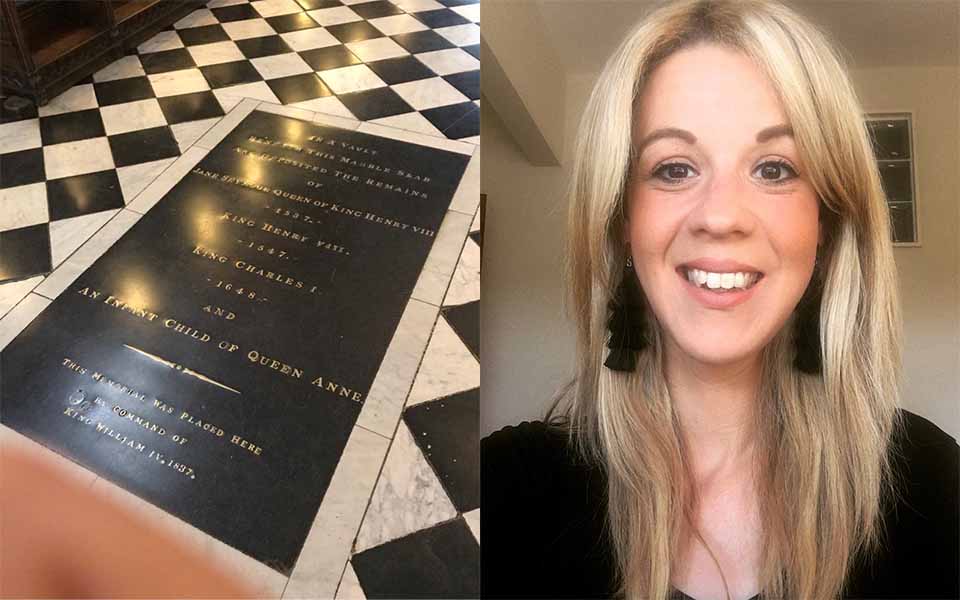Why the austerity of Henry VIII's tomb does not reflect the English monarch's lavish, larger-than-life reputation is the subject of new research by a University of Huddersfield alumna.
Dr Emma Ferguson was intrigued by the simplicity of the black marble marker to Henry, who ruled England from 1509 to 1547, that lies within St. George's Chapel at Windsor Castle. She has discovered that there were financial and political reasons why his plans for an elaborate memorial more in keeping with how he was perceived - and how he perceived himself - did not come to fruition.
Emma's work has been published by Palgrave Macmillan and follows on from her PhD, 'The Construction of High Status Masculinity through the Tournament and Martial Activity in the later Middle Ages', which she finished in 2017.
Her chapter in 'Memorialising Premodern Monarchs: Medias of commemoration and remembrance' is called 'The whole stature of a goodly man on a large horse'. It was inspired by the paper she presented at the International Medieval Congress in Leeds in 2018, although it was a visit to Windsor Castle that originally inspired her.
 The tomb of Henry VIII in St George's Chapel at Windsor Castle and Dr Emma Ferguson
The tomb of Henry VIII in St George's Chapel at Windsor Castle and Dr Emma Ferguson "If you think about everything that you have heard about him, this larger-than-life figure and how extravagant the Tudor court was, then the black marble slab in the ground at St George's Chapel is not what you would expect," Dr Ferguson declares.
Henry's plans unearthed
"I was interested and through some research I found that John Speed, a source from the 17th Century, had unearthed a manuscript and inside that were written designs of plans for Henry's tomb.
"The plans were that Henry wanted a life-size statue of him on horseback in armour under a triumphal arch. These were elaborate plans, that in modern money would be around £6m - 75,000 ducats - and an Italian sculptor was commissioned to put it together."
The proposed statue would have been in St George's, as Henry wanted to be buried near Edward IV and Henry VI as a symbol of the country uniting under him following the Wars of the Roses. Henry's father, Henry VII, is buried at Westminster Abbey but his son's hopes for his own memorial did not become reality.
"Henry's treasury was drained with the wars against France in the 1540s," Emma adds. "Some progress was made under Edward VI, but his treasury was also short of funds and his reign was short-lived, and Mary I did nothing.
"That may be related to her relationship with Henry, her father, or his treatment of her mother, Catherine of Aragon. Elizabeth I had some interest in Henry's plans but nothing was completed."
Plans were in keeping with Henry's self-image
Henry's plan was that the memorial would see him remembered as an heroic, masculine leader is an image that connects to the Most Noble Order of the Garter, which is closely associated with St. George's Chapel. He hoped that his image would be perpetuated by his proximity to Edward IV, a warrior king, while Henry's participation in jousting tournaments developed the myth around him even further.
However, it was England's conflicts with France that emptied the country's coffers and helped prevent the kind of memorial that Henry had planned for himself.
"The plans fit the model that I have been arguing for, and we can get a lot from this planned effigy that he wants to be represented as a king in armour on horseback," Emma says. "We can learn a lot from how Henry intended to be remembered by these plans. Historians can put perspectives on it, but when his plans are him in armour on horseback, that speaks volumes and attests to everything I have discovered and said about him in my research."







